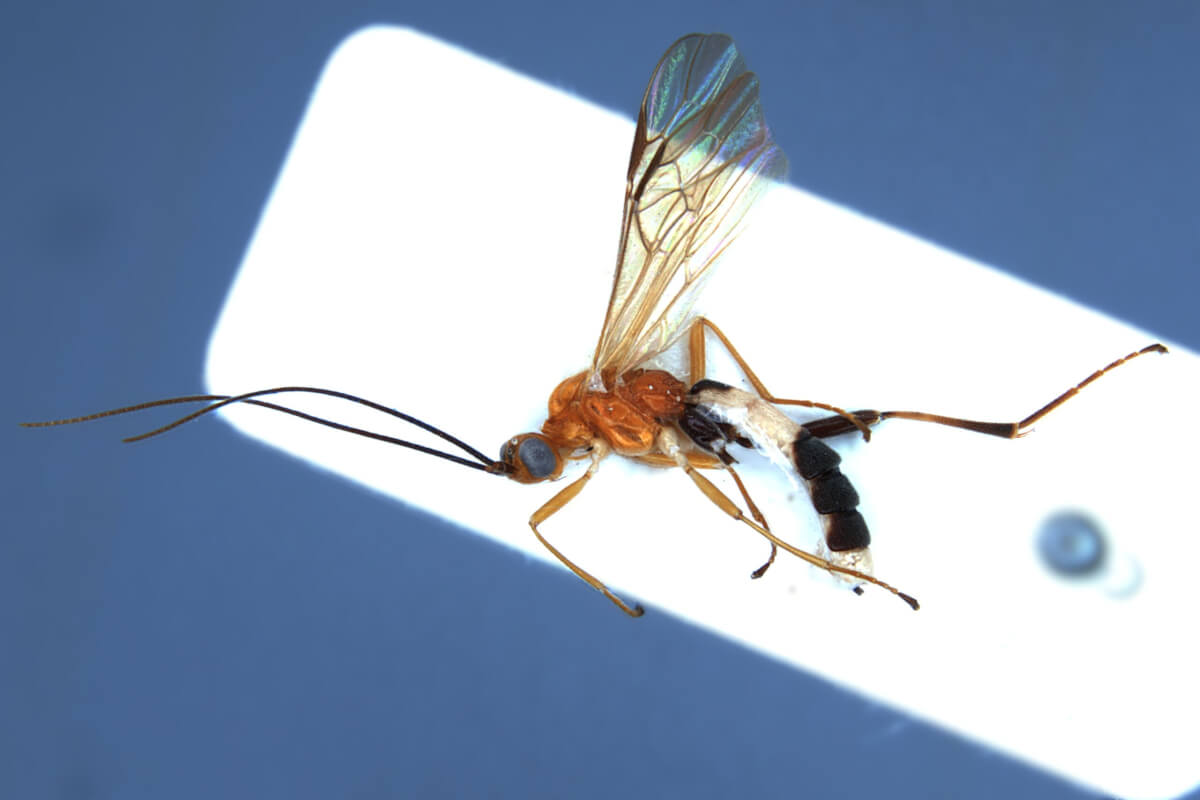Tennis
Newly discovered wasps named after tennis legends Roger Federer, Rafael Nadal

Troporhogas rafaelnadali. (Credit: Marisa Loncle)
THAILAND — Men’s tennis greats Roger Federer and Rafael Nadal stung plenty of their opponents over their storied careers. Now the legends have found themselves immortalized in the taxonomy of newly discovered insects. Deep in the jungles of Thailand and India, a team of tennis-loving entomologists uncovered six new species of tiny parasitic wasps, with two of them bearing the names of the two superstars.
The discovery, published in the journal ZooKeys, is the result of years of painstaking fieldwork and meticulous analysis by researchers from Chulalongkorn University in Thailand, the Ashoka Trust for Research in Ecology and the Environment in India, and several other international institutions. While the naming of Troporhogas rafaelnadali and Troporhogas rogerfedereri might seem whimsical, it reflects both the scientists’ admiration for these athletes and their hope to draw attention to these fascinating but often overlooked creatures.
These minuscule marvels, measuring just a few millimeters long, belong to the genus Troporhogas – a group of wasps that has long puzzled scientists due to its rarity and elusive nature. The findings not only expand our knowledge of these fascinating creatures but also highlight the incredible biodiversity still waiting to be discovered in Southeast Asia’s tropical forests.
Troporhogas wasps may be small, but they play a crucial role in their ecosystems. As parasitoids, they lay their eggs inside the bodies of other insects, typically caterpillars. When the wasp larvae hatch, they feed on their unfortunate host from the inside out, eventually emerging as adults. This gruesome but effective lifestyle helps keep pest populations in check, making these wasps valuable allies in natural pest control.


Study authors also conducted genetic analysis to understand how these wasps are related to each other and to other members of their subfamily, the Rogadinae. This work revealed that Troporhogas wasps fall into two main groups – one found in Africa and another in Asia and Australia. The newly discovered species all belong to the Asian group, forming their own distinct branch on the wasp family tree.
The six newly described species each have their own unique characteristics that set them apart from their relatives. Troporhogas alboniger, for instance, sports a striking black and white color pattern, reminiscent of a tiny flying penguin. T. benjamini boasts an elegant ivory and dark brown coloration, while T. hugoolseni has a distinctive orange-red head that stands out against its otherwise pale body.
Troporhogas rafaelnadali, named after Nadal, is one of the newly discovered species from Thailand. This tiny wasp, measuring about 6 mm in length, has some distinctive features that set it apart from its relatives. Its body is tricolored, with an orange-red head and mouthparts, an orange-yellow mesosoma (the middle part of the body), and a metasoma (rear part) that’s a striking combination of white, black, and orange-yellow.
One of the most distinguishing characteristics of T. rafaelnadali is the strong, fine striations on the raised oblique area of its mesopleuron, just below the subalar depression. This feature is unique among the newly described species and helps in its identification. The wasp also has a transversely striated vertex (top of the head) and a distinctively shaped occipital carina (a ridge on the back of the head) that’s slightly pointed dorsally.


Troporhogas rogerfedereri, named in honor of Swiss tennis legend Roger Federer, is another new species found in Thailand. This wasp is slightly smaller than its Nadal-inspired counterpart, measuring about 5.5 mm in length. It has a striking tricolored body pattern, with an orange-red head, an orange-red mesosoma, and a metasoma that’s a mix of white, black, and ivory.
What makes T. rogerfedereri stand out is the unique structure of its propodeum (the rear part of the thorax). It has a pair of submedial carinae (raised lines) that form a wide U-shape anteriorly, a feature not seen in other Thai species of Troporhogas. The wasp also has a strongly transversely striated vertex, setting it apart from its close relative T. flavistigma, which has a mostly smooth vertex.


Both of these tennis-inspired wasps were collected using Malaise traps in different national parks in Thailand – T. rafaelnadali in Khao Yai National Park and T. rogerfedereri in Khao Sok National Park. Like other members of their genus, they are presumed to be parasitoids of caterpillars, though their specific host preferences are not yet known.
The naming of these species after Nadal and Federer is not just a nod to the scientists’ appreciation of tennis. It also serves a practical purpose in taxonomy, helping to create memorable and distinctive names for these newly discovered insects. Such naming practices can also help draw public attention to the importance of biodiversity research and conservation, using the popularity of sports stars to highlight the fascinating world of insects.
“T. rogerfedereri and T. rafaelnadali are parasitoid wasps, whose larvae devour their hosts from the inside,” says Buntika Areekul Butcher, who led the study to describe the new insects. “As their names proclaim, they honor the tennis greats Roger Federer and Rafael Nadal, who although competitors on the court have been on the same doubles team too. Also, two of the authors are huge fans of both Roger and Rafa.”

The discovery of these six new species brings the total number of known Troporhogas wasps to 20 worldwide. However, the researchers believe this is likely just the tip of the iceberg. Many more species may be waiting to be found in the understudied forests of Southeast Asia and beyond.
The next time you watch a thrilling tennis match or cheer for your favorite player, remember that their legacy might extend far beyond the court. In the grand tapestry of life, even the smallest threads can hold great significance, and now two of tennis’s biggest stars have lent their names to some of nature’s tiniest champions. Who knows what other miniature wonders are still waiting to be discovered in the hidden corners of our world?


)






